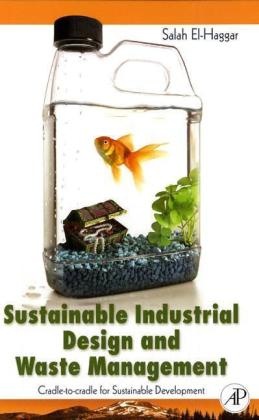Read more
Informationen zum Autor Dr. Haggar has more than 30 years experience in Energy and Environmental Consulting and University teaching. Dr Haggar has been a visiting professor at Washington State University and at University of Idaho, U.S.A. He is presently the professor of Energy and Environment at the American University in Cairo, Mechanical Engineering Department, Cairo, Egypt Dr. Haggar has more than 20 Academic Honors, grants and awards. Dr. El-Haggar received the outstanding undergraduate teacher award at The American University in Cairo in 1995 as well as a number of outstanding AUC trustees’ awards. In addition Dr. Haggar has 120 Scientific Publications in Environmental and Energy Fields, 33 invited presentation, 42 technical report, 12 books and one chapter in two different books. Dr’s Haggar Environmental Consulting experience include more than 40 Environmental/Industrial Auditing for major industrial identities, 20 Compliance Action Plan, 9 Environmental Impact Assessment in addition to his extensive consulting experience in Environmental Engineering, Environmental Auditing, Environmental impact assessment, Environmental management systems, Cleaner Production, Industrial Ecology, Energy management, Hazardous and non-Hazardous Waste management, Recycling, Pollution prevention and waste minimization, zero pollution, Biogas/Solar/Wind technology, Community/Desert development, Solid and industrial waste, environmental assessment for the local government and private industries. Dr. Haggar is a member/board member in 14 national and international societies in the area of Mechanical Engineering, Environmental Engineering and community development. Klappentext A major environmental and economic problem of the 21st century is the waste generated from industry. The development of science and technology has increased human capacity to extract resources from nature. Extracted resources are then processed, used and exposed of. It is only recently that industries are being held accountable for the detrimental effects the waste they produce has on the environment. Issues of pollution control, waste treatment and environmental protection are being addressed because of increased governmental research, regulation and corporate accountability. Ever since the Earth Summit of Rio de Janeiro in 1992, much has been written about sustainability while guidelines for implementation have been scarce. Industrial ecology is the science of sustainability as it pertains to improving the efficiency of human use of the ecosystem. Issues intrinsic to industrial ecology and sustainability are economic benefits, technological availability, environmental conditions and social perspectives. Concentrated on industrial ecology, this book details the need for the conservation of natural resources, waste utilization, and the use of renewable natural resources in industry. Beginning with guidelines for developing sustainability indicators and providing guidelines for the cradle-to-cradle concept in which industries partner to reuse and reduce waste, it provides an integrated approach to sustainable development for the 21st Century. Zusammenfassung Offers solutions to the issues and concerns of waste generated from industry. This book aims to conserve the natural resources by approaching 100 % utilization of various types of wastes by cradle-to-cradle concepts! using Industrial Ecology methodology documented with case studies. It reveals technologies for conservation of natural resources. Inhaltsverzeichnis CHAPTER 1 CURRENT PRACTICE 1.1 Introduction 1.2 Waste Management 1.3 Treatment 1.4 Incineration 1.5 Landfill 1.6 Zero pollution CHAPTER 2 CLEANER PRODUCTION 2.1 Introduction 2.2 Promoting cleaner Production 2.3 Benefits of Cleaner Production 2.4 Obstacles and Solution of Cleaner Production 2.5 Cleaner Production Techniques 2.6 Methodology for...
List of contents
CHAPTER 1 CURRENT PRACTICE
1.1 Introduction
1.2 Waste Management
1.3 Treatment
1.4 Incineration
1.5 Landfill
1.6 Zero pollution
CHAPTER 2 CLEANER PRODUCTION
2.1 Introduction
2.2 Promoting cleaner Production
2.3 Benefits of Cleaner Production
2.4 Obstacles and Solution of Cleaner Production
2.5 Cleaner Production Techniques
2.6 Methodology for Cleaner Production Assessment
2.7 Case Studies
CHAPTER 3 SUSTAINABLE DEVELOPMENT AND INDUSTRIAL ECOLOGY
3.1 Introduction
3.2 Industrial Ecology
3.3 Industrial Ecology Barriers
3.4 Industrial Ecology tools and indicators
3.5 Cradle ? To ? Cradle concept
3.6 Eco-Industrial Parks
3.7 Kalunberg Industrial farm
CHAPTER 4 SUSTAINABLE DEVELOPMENT AND ENVIRONMENTAL REFORM
4.1 Introduction
4.2 Sustainable development tools and methodology
4.3 Environmental Reform Structure
4.4 Sustainable Development Proposed Framework
4.5 Summary and Conclusion
CHAPTER 5MUNICIPAL SOLID WASTE
5.1 Introduction
5.2 Transfer station
5.3 Recycling of plastics
5.4 Recycling of Food waste
5.5 Recycling of rejects
5.6 Recycling of Composite material
5.7 Recycling of bones
5.8 Recycling of glass
5.9 Recycling of aluminum and tin cans
5.10 Recycling of textile
CHAPTER 6 CONSTRUCTION AND DEMOLITION WASTES
6.1 Introduction
6.2 Construction Waste Management
6.3 Proposed guidelines for Construction Waste
6.4 Proposed guidelines for Demolition Waste
CHAPTER 7CLINICAL SOLID WASTE
7.1 Introduction
7.2 Management of Clinical Waste
7.3 Disinfection of Clinical Wastes
7.4 Current Experience of Clinical Wastes
7.5 Cradle ? to - Cradle For Clinical Waste
7.6 Electron Beam Technology
7.7 Electron Beam for Sterilization Of Clinical Wastes
CHAPTER 8AGRICULTURAL AND RURAL WASTES
8.1 Introduction
8.2 ABBC technologies
8.3 Animal fodder
8.4 Briqutting
8.5 Biogas
8.6 Composting
8.7 Integrated Complex
8.8 Environmentally balanced Rural Waste Complex; EBRWC
CHAPTER 9INDUSTRIAL SOLID WASTES
9.1 Introduction
9.2 Sugarcane Industry
9.3 Metal Industry
9.4 Textile industry
9.5 Marble industry
9.6 Oil and soap Industry
9.7 Petroleum Industry
9.8 Food Industry
9.9 Cement Industry
9.10 Tourism Industry
9.11 Industrial estate

